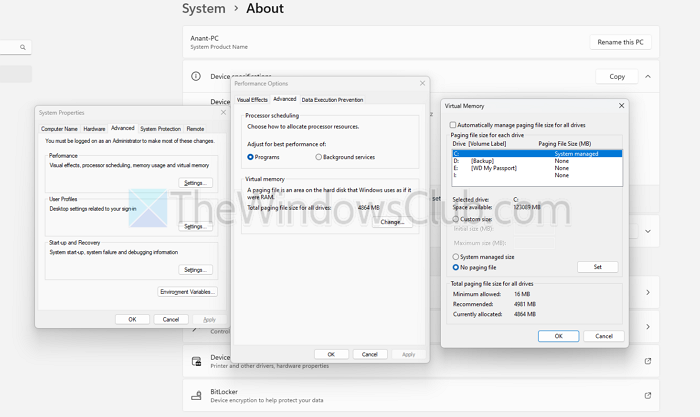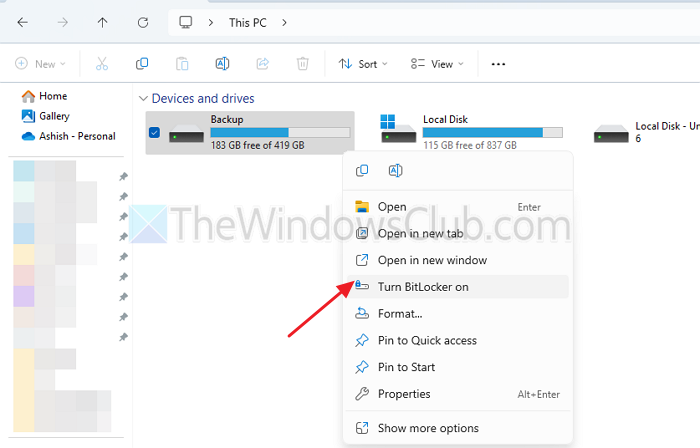Virtual memory, also known as a Page file, adds to the physical RAM by using disk space. However, moving the page file to a secondary SSD can help free up space if you run out of space on the primary. When doing so, we have noticed many reports that suggest it doesn’t work, and the virtual page is recreated every time one tries to move. Here’s how to resolve these issues step-by-step by creating a Virtual Memory on a secondary SSD and ensuring a functional configuration.

How to create Virtual Memory on a Secondary SSD
Before proceeding, ensure you have sufficient free space for the page file. Ideally, this should match or exceed your RAM size (e.g., allocate at least 16000MB for 16 GB RAM).
- Press Win + Pause/Break or search for Advanced System Settings in the Start menu.
- Click on the Advanced System Settings link under device information.
- Under Performance, click Settings.
- In the Advanced tab, click Change under Virtual Memory.
- Uncheck Automatically manage paging file size for all drives.
- Select the primary drive (C:) and set it to No Paging File, then click Set.

- Select the desired secondary drive (D: or F:), choose “Custom size,” and specify both Initial size and Maximum size (e.g., 16000MB each). Click Set.
- Click OK to save changes and restart the computer.
Windows may still require a small page file on the OS volume (C:) for crash dumps and other critical processes. To prevent errors, allocate a small page file (e.g., 800MB) to the C: drive while setting the larger page file on the secondary SSD. Restart the computer and verify the configuration.
Read: Windows keep using HDD instead of SSD for Page File when the RAM is full
Windows cannot create Virtual Memory on secondary SSD

BitLocker or Windows security policies may prevent relocating the page file to a non-OS drive. It is also possible that the secondary SSD is not encrypted using BitLocker to address potential security concerns required for paging files.
To encrypt, right-click on the secondary SSD, click Turn Bitlocker on, and then follow the process.
Temporary Page File created on C: drive
Windows dynamically creates a temporary page file when it cannot find a valid configuration. To avoid that, you need to check the allocated size of the Page file on the secondary drive and ensure there is enough free space.
Why does Page File revert to C: Drive despite settings
System security measures prioritize the OS drive if other drives are deemed insecure or unfit. To avoid that, you need to encrypt the secondary SSD using BitLocker, i.e., Open File Explorer, right-click the drive, and select Turn on BitLocker. Follow the prompts to complete encryption.
Leave a Reply